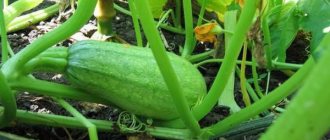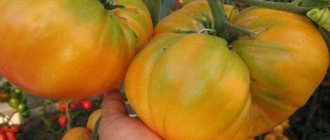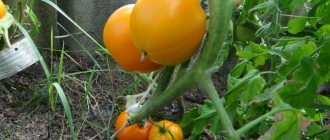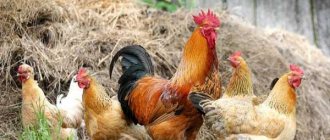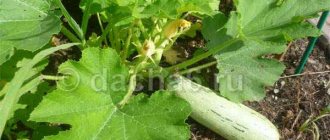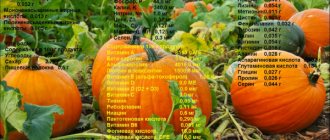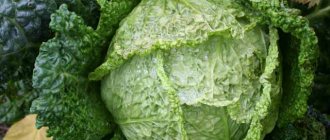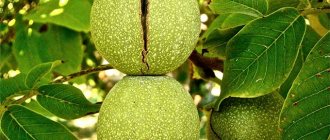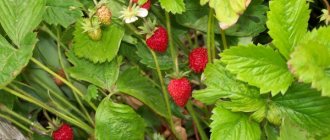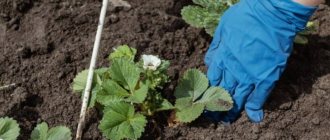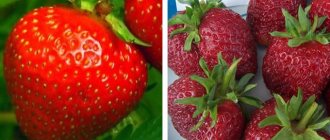- What are the best strawberry varieties for Siberia?
- What varieties of strawberries are not grown in Siberia?
- The best strawberry varieties for Siberia
- Imported varieties
- Domestic varieties
What varieties of large-fruited strawberries are ideal for growing in Siberia and other cold regions? In the harsh conditions of Western and Eastern Siberia, not all varieties of large-fruited strawberries grow well. Some of them freeze slightly in autumn and spring and lose leaves from sunburn. Only winter-hardy varieties should be grown: as a rule, this does not depend on the place of origin of the variety. What varieties are best suited for growing in our conditions? Read the detailed answer in the article.
How to choose the right strawberry variety for Siberia
To choose the right variety for cultivation in Siberia, you should consider the following characteristics:
- resistance to frost;
- ability to quickly recover after leaf fall;
- high immunity to diseases and insect pests characteristic of the culture;
- productivity;
- resistance to external, mechanical damage, which is required for transporting fruits over long distances.
Growing and caring for strawberries in Siberia - video
These are the main criteria that should form the basis of the choice. It is difficult to find a variety that combines all of the listed properties. However, there are excellent strawberries with excellent performance for the Siberian climate.
Agroclimatic features of the region
Siberia is a vast territory with very different climates in its opposite parts. A region with relatively stable weather that is most suitable for farming is Western Siberia. There is a temperate continental climate here. In turn, Western Siberia, which extends in the flat region, is divided into several climatic zones: arctic (tundra), subarctic (tundra and forest-tundra) and temperate (continental forests and forest-steppes).
From the Yenisei Valley in the west to the Verkhoyansk Range in the east lies Central Siberia. The areas are characterized by a sharply continental climate with a large amplitude of the difference between summer and winter. Due to the peculiarities of the relief, the weather in winter in Central Siberia is clear, sunny and frosty, mostly without winds or precipitation.
Almost the entire territory of Eastern Siberia is occupied by vast taiga. Winter lasts from 5 to 8 months with a predominance of sunny, clear and windless days. When the long-awaited summer arrives, temperatures can rise to 38-39 °C in some months.
Remontant strawberries for Siberia - the best varieties
Remontant varieties of strawberries bear fruit twice a season. This explains the popularity of this berry among summer residents. A feeling of continuous fruiting is created: new berries quickly form in place of the collected fruits.
Siberia is characterized by a short summer. It is often cool, with temperature changes and rain. At the moment, the best varieties in this category are: Garland, Tanyusha, Temptation, Lord.
Garland
A remontant variety with tendrils of a light pink hue. Strawberries ripen early. The berries are medium-sized and have a “classic” shape. The yield is high - from 1 to 1.2 kg per bush. Strong peduncles easily hold massive fruits, which prevents them from being on the ground and rotting. The plant has fairly large leaves.
Photo of strawberry garland
Remontant strawberry Garland is simple in agricultural technology. Recommended for vegetable growers without experience. She has excellent taste. High resistance to frost, strong immunity - everything that is required for the climatic conditions of Siberia.
Doesn't like being overwatered and immediately starts to hurt.
This should definitely be taken into account when choosing this strawberry to grow.
Strawberry "Tanyusha"
Mid-season remontant variety, with a moderate number of tendrils. The fruits are round, with a pointed tip. Sweet taste with sourness. The culture has a subtle aroma. Each berry is dense, weighing from 10 to 19 grams. The fruits are eaten fresh and processed. They make delicious jams and preserves.
Photo of strawberry Tanyusha
The plant has strong immunity. Feels great at low temperatures and even frosts. In addition to tasty fruits, the variety is distinguished by its decorative properties: it blooms amazingly. The harvest is good. The foliage is average. The leaves are bright green, slightly corrugated. Easy to care for. The only negative is that it is not well preserved.
Good varieties of raspberries!
Raspberry tree Tale of Indian Summer Raspberry remontant Diamond
Strawberry "Temptation"
A remontant strawberry variety with a lot of runners. Compact bushes have fairly large green leaves with an emerald tint. Each shoot produces approximately 20 white flowers. In summer, they produce delicious, soft-fleshed berries. All are the same size, which gives a special aesthetic appearance. There are no voids inside the fruit. Productivity up to 1.5 kg per bush.
Photo of strawberry Temptation
Advantages of the Temptation variety: rapid ripening, long-term fruiting, resistance to very low temperatures. Disadvantages: low yield in the absence of systematic watering.
Lord
A remontant variety with rapidly growing tendrils. The bush is tall and erect. It grows quickly. Large, rich red berries have a sweet, juicy taste. The weight of an individual fruit is 100 g. The yield is 1 kg per bush.
Photo of strawberry Lord
Strawberry Lord has pronounced protective properties and can withstand frost. The main advantage is continuous fruiting for 10 seasons. It is perfectly preserved during long-distance transportation. Among the disadvantages, the need for tying is noted so that the berries do not end up on the ground.
Terms used in the article and their definition
Strawberries can be remontant or non-remontant. Remontant strawberries produce two harvests per season; for the conditions of Siberia, such varieties were bred several decades ago. Non-repairing strawberries bear fruit only once.
Growing strawberries using the strip method.
A table will help you understand the ripening time (information taken from the book “Strawberries. Strawberries. Varieties, care, seasonal calendar.” Nikolay Zvonarev).
| Term | When are strawberries ripe (approximately) |
| Early | The beginning of June |
| Average | Third ten days of June |
| Late | Mid July |
The mid-early variety produces a harvest in the first half of June, the mid-late variety - closer to the beginning of June. Approximately the same timing will be for the European part of Russia and the Urals, and in the south it will shift back by 10–20 days.
Read about the intricacies of feeding strawberries in spring in this article.
The descriptions may include the purpose of the variety:
- dessert (sometimes table) - fruits or berries are tasty, can be eaten without cooking, in their natural form;
- technical - it is better to process fruits or berries;
- universal - fruits or berries can be eaten fresh without processing, used in cooking, or processed.
Tasting assessment is an assessment of the taste and aroma of berries. Researchers try numbered varieties without knowing their names and evaluate these indicators on a scale from 1 to 5 points. At the end of the study, the scores are summed up, then their sum is divided by the number of study participants.
The tasting rating is a subjective indicator, and some gardeners do not agree with it.
Frost-resistant strawberry varieties
A mandatory property that berries grown in Siberia must have is the ability to withstand the lowest temperatures. Among the best frost-resistant strawberry varieties: Amulet, Kama, Zephyr, Torpedo.
Amulet
Non-repairing variety, has tendrils. Juicy, sweet, medium-sized, cone-shaped berries ripen in a short time. Average weight – from 30 to 35 g. With proper care, they get a harvest of a couple of kg per bush.
The amulet is resistant to low temperatures. He is not afraid of fungus or strawberry mites. The berries are eaten fresh or frozen. The fruits are perfectly stored in the freezer, preserving their taste and nutrients.
Amulet strawberries are ideal for growing commercially. Excellent resistance to transportation over any distance.
Strawberry variety "Kama"
An early ripe remontant variety, with a small amount of whiskers. In greenhouse conditions, the harvest is harvested as early as April. In open ground - in May. All bushes are compact, beautiful, with large flower stalks.
They produce bright red triangular-shaped fruits. With proper agricultural technology, the yield of Kama strawberries is up to 1 kg per plant. The first harvest is massive: the weight of an individual fruit is up to 50 - 65 grams. The weight of berries of the next harvests is at the level of 30 - 40 grams.
Marshmallow
The non-repairing variety Zephyr was obtained in Denmark. A spreading green bush with strong stems that hold the fruits above the ground. There are mustaches. The weight of the berry is at least 50 grams. Compared to Kama, there is no tendency to decrease in size.
Productivity is at the proper level - 1 kg per bush for 1 season. Withstands any transportation and is well stored. One of the commercial varieties. Loves feeding with organic substances.
ZEMKLUNIKA!
Strawberry (earthberry) Merchant's wife
Torpedo
Non-repairing variety with an average number of tendrils. The berries are small in size and oblong in shape, weighing 10-15 grams, with dense, tasty, juice-rich pulp. The sweet taste is diluted with a pleasant, unobtrusive sourness. Leaves are dark green. Productivity up to 190 grams per bush.
The berries are eaten fresh and processed. Equally good for freezing and cooking.
Idun
This strawberry was bred by breeders from Denmark specifically for cold regions. The variety has high frost resistance and fruiting, and is unpretentious to growing conditions. Idun begins to bear fruit in early May. The berries have a juicy and bright taste. The plant is resistant to strawberry mite. The disadvantages of the variety include a tendency to gray rot, as well as low density of fruits, which does not allow them to be transported over long distances.
The largest varieties of strawberries for Siberia
Geneva
Remontant variety with a small amount of mustache. Presented by low bushes with many juicy green, large leaves. The fruits themselves are medium in size. Berry weight - 50 g. They have an elongated shape. The taste is sweet. After the first harvest, the bush blooms again after 14 days. Easy care. The culture requires the application of fertilizers, systematic moistening and loosening of the soil. The second harvest is larger. All berries ripen at the same time. Strawberry Geneva has good immunity.
Strawberry "Maryshka"
A medium-early, non-repairing variety, with an average number of runners, obtained in the Czech Republic.
The main distinctive feature of the “Maryshka” strawberry is its oblong triangular shape. Color – dark red. The weight of one fruit is within 25 grams. Productivity from one bush – 500 g.
The berries are sweet and have a pronounced aroma. The bush is compact and holds fruits well, preventing them from falling to the ground. Due to this, harvesting is easy. The variety is resistant to stains, rot, aphids, and mites. In addition to frost, it tolerates drought well.
Strawberry "Tristar"
Remontant variety with a small number of whiskers. Bears cone-shaped fruits twice during the season. The plant is quite large in diameter - up to 80 cm. The weight of the berry is about 30 grams. Tristar strawberries bear fruit before frost appears.
Requires a change of location every year. This contributes to a good harvest. After the first harvest of fruits, the bushes are thoroughly cleaned, removing dried leaves and flower stalks. Afterwards, fertilizers are applied and watering is carried out.
The second harvest of fruits occurs in mid-summer, the second half of July. Tristar remontant strawberries are grown even at home: on a loggia or balcony. You should definitely shape your mustache using the vertical method (using trellises).
Variety of large strawberries “Ruby pendant”
Mid-season, remontant variety, with large mustaches. Received as a result of crossing Fairfax and Zeng Zengana. Has average yields. The berries of the “Ruby Pendant” strawberry are small, one weighs about 12 grams. The fruits have a smooth, shiny surface with gloss. Conical shape with a short neck. The pulp is tasty, dark red, juicy. Approximately 500 grams of fruit are obtained from the bush.
Fireworks
It is characterized by an average ripening period, good frost resistance, high yield and versatility. Fireworks fruits are distinguished by their cone-shaped shape, large size and juicy taste. The shrub does not take up much space and is resistant to diseases and pests. The disadvantage of this variety is that by the end of fruiting the berries become smaller. It is also demanding on fertilizing and watering.
Strawberry varieties for Siberia
These varieties do not have shoots, which cause a lot of inconvenience to vegetable growers. This is due to the need to thin out the bushes. Among the best Siberian varieties: Darenka, Slonenok, Yunia Smidz.
Darenka
Non-repairing variety with a moderate number of tendrils. It is characterized by early, rapid maturation. The weight of one fruit ranges from 14 to 30 grams. It has dense pulp and sour taste. Darenka strawberries are also frost-resistant. Excellent transportability over different distances. Refers to varieties grown for sale. Has the ability to be stored for a long time. The yield is high - up to 1.5 kg per bush.
Strawberry variety "Elephant"
Non-repairing variety with a small amount of whiskers. It is a plant with powerful, straight-standing stems. Resistant to frost. It is practically unaffected by pests and diseases characteristic of the crop. Fruit weight is about 26 grams. It has a voluminous round shape, slightly flattened on the sides. The fruits ripen at the same time, which makes harvesting easier.
Handles transportation well. Excellently preserves taste and external qualities. The yield of Strawberry Elephant reaches 800 grams per m2.
Remontant strawberry "Unia Smides"
A remontant variety with an average ripening period. Received in Latvia. Has a mustache. Tall bush with dense foliage. The fruits are red-pink, glossy, and cone-shaped. A neck is present. The berries have a sweet and sour taste and a delicate aroma. Strawberries weigh approximately 30 grams. At the next fruiting, this value decreases by 3 times, reaching 10 g.
Productivity is high. Up to 2 kg of strawberry "Junia Smides" is harvested from one plant.
All of the listed varieties are perfect for growing in Siberia, in any conditions (greenhouse, open ground).
Below are several reviews from Siberian gardeners about the best varieties of strawberries that they grew on their plots.
Strawberry varieties - video
Secrets of care
In general, strawberries are an unpretentious plant. But the difficult climatic conditions of the region force gardeners to take special care when planting. In addition to conventional watering and loosening, intensive cultivation technology requires an increased concentration of nutrients when applying fertilizers, and good shelter for the winter.
Watering
The soil under the bushes should always remain moist. This will ensure intensive growth of the bushes. However, strawberries do not like stagnant moisture in the roots - water the specimens only after the surface layer has dried. Water is used at room temperature.
The optimal method of irrigation is drip. Then the moisture will flow under the bushes in doses, will not get into the sockets - will not provoke the development of gray rot
Soil treatment
With the arrival of spring, when the snow disappears, the soil is loosened and mulched to prevent contact of flower stalks with the ground, as well as to maintain soil moisture for longer. The layer will protect the strawberries from possible cold snaps. During the season, loosening is carried out 3-4 times after precipitation or watering, saturating the soil with oxygen. At the same time, weeds are removed, which take away nutrition and moisture from the strawberry bushes.
Top dressing
To ensure adequate nutrition, strawberry beds are regularly enriched with nutrients using organic and mineral fertilizers. After the snow melts, nitrogen-containing complexes are used to stimulate the development of green mass. Then phosphorus and potassium are added to the composition, which normalize metabolic processes, ensuring long-term fruit formation.
Pruning and thinning
The very first flower stalks are cut off to obtain large berries. Thin out the plantings in a timely manner, avoiding overcrowding, which will negatively affect fruiting. If the variety is prone to creeping, they are regularly plucked off, leaving no more than three on the bush. Since the plant spends a lot of energy on the development of foliage, less greenery is left to redirect nutrition to fruit formation. And in the fall they carry out sanitary pruning.
Preparing for winter
They begin to prepare the berry garden for cold weather immediately after fruiting has finished. After sanitary pruning, preventive treatment against diseases and pests is carried out. In dry autumn conditions, without heavy precipitation, additional watering is carried out, pouring 1.5-2 liters of water under each bush. In Siberia, spruce spruce branches are used as a covering material, which protects the plantings from severe frosts, but does not allow them to warm up - good air circulation is maintained under it.
Transfer
After 5 years, the berry plant requires replanting. This is indicated by the shrinking of the berries. Plants should be planted in a new location in the northern regions at the end of summer, following the planting technology. When moving, garden crop rotation with optimal predecessors is taken into account.
The best strawberry varieties for Siberia - reviews
Vladimir Ivanovich, 56 years old, Kemerovo:
“Geneva was chosen due to its numerous fruitings during the season. The plant has spreading bushes, and therefore when planting we keep a distance of half a meter. This helps prevent rot from forming. We make sure to trim the mustache, 3 to 4 times a season. Berries weighing up to 50 grams with a sweet and sour taste. At the same time, the amount of sourness is minimal. For the winter we cover from frost. The Geneva strawberry variety likes frequent watering until the very end of the season.”
Maria Evgenievna, 39 years old, Novokuznetsk:
I made a choice in favor of the Ruby pendant because of its repairability. In addition, the fruits have a beautiful appearance and a rich, sweet taste. I grow it for several seasons in a row. Every time the variety produces a high yield, even when I provide minimal care. Everyone I treated liked the berries.”
Vitaly, 48 years old, Novosibirsk:
“I grow the strawberry variety Junia Smides every year. It is undemanding to care and produces a good harvest. I recommend it for those who love sweet berries, and also for beginners.”
Recently searched:
Berdskaya Early
In terms of ripening time, this variety is classified as early and non-repairing. The fruits are large, the weight of one reaches 20 g. The peel is red, and the shape of the berries is in the form of a rounded cone. The taste of strawberries is sweet, there is a slight sourness. The berries have dessert uses.
The crop is distinguished by its high and stable yield, but this can only be achieved with careful care. It is best grown in a greenhouse or greenhouse. The average number of whiskers is concentrated on the bushes. The variety is resistant to some diseases and parasites, including strawberry mite and gray rot.
Read also: Vima Zanta strawberries: description of the variety, reviews, photos, videos
Medium early variety. It was obtained by Czech breeders. If you grow bushes under film, the berries ripen early. The variety is distinguished by large, elongated berries. They have a dark red color, one weight is 25 g. From one bush you can get up to 1.5 kg of strawberries.
The taste of the berry is sweet, fragrant, but the pulp is not very juicy. Since the size of the bush is compact, the flower stalks do not contact the ground, but are concentrated above the leaves. And this makes caring for the plant much easier. Few whiskers are formed. The variety is resistant to spotting, rot, mites and aphids.
Knowing the most popular large-fruited and winter-hardy varieties of strawberries, you can enjoy a tasty and sweet harvest even for residents of Siberia. But to do this, they will have to provide the berry bushes with proper care, which will include watering, loosening the soil, fertilizing and pest control.
Planting strawberry seedlings in the ground
In May, hardened seedlings are planted in the ground, taking care not to bury the growing point. At first, plants require shading and covering with non-woven material from return frosts.
Planting seedlings can be done throughout the season. The more developed the seedlings and the hotter the weather, the more shade and watering they need. Peduncles are removed for better survival and development.
Place for strawberries
Choose a place where strawberries have not grown for 2-3 years, sunny (in the shade there is poor berry set, more diseases), with drained, slightly acidic soil of average fertility.
How to plant
In the future, strawberries grown from seeds are cared for in the same way as garden strawberries: watered and weeded. The soil is loosened carefully, superficially, trying not to damage the root system of the seedlings. Seedlings may bloom in the year of planting, but the main harvest will only be the following year.

